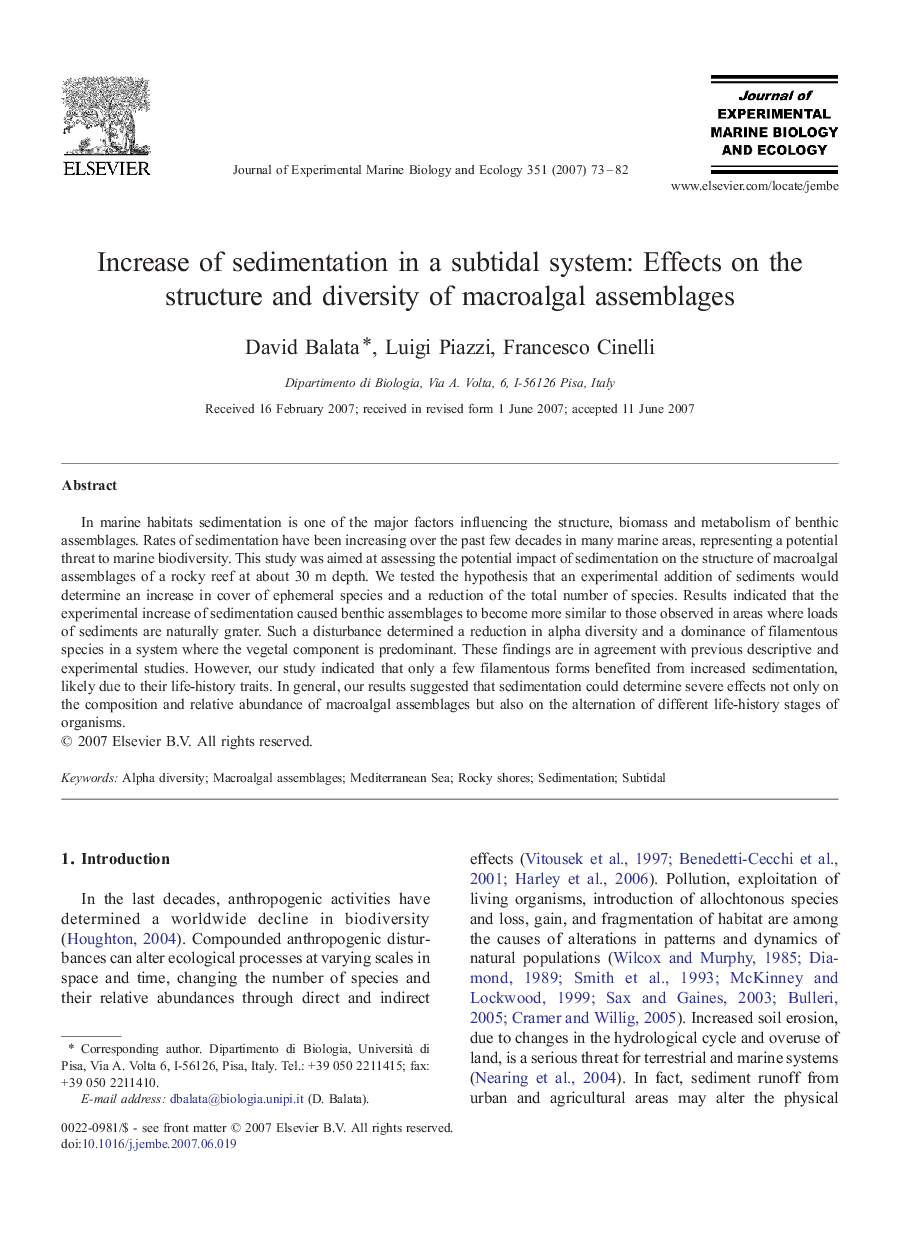| Article ID | Journal | Published Year | Pages | File Type |
|---|---|---|---|---|
| 4397538 | Journal of Experimental Marine Biology and Ecology | 2007 | 10 Pages |
In marine habitats sedimentation is one of the major factors influencing the structure, biomass and metabolism of benthic assemblages. Rates of sedimentation have been increasing over the past few decades in many marine areas, representing a potential threat to marine biodiversity. This study was aimed at assessing the potential impact of sedimentation on the structure of macroalgal assemblages of a rocky reef at about 30 m depth. We tested the hypothesis that an experimental addition of sediments would determine an increase in cover of ephemeral species and a reduction of the total number of species. Results indicated that the experimental increase of sedimentation caused benthic assemblages to become more similar to those observed in areas where loads of sediments are naturally grater. Such a disturbance determined a reduction in alpha diversity and a dominance of filamentous species in a system where the vegetal component is predominant. These findings are in agreement with previous descriptive and experimental studies. However, our study indicated that only a few filamentous forms benefited from increased sedimentation, likely due to their life-history traits. In general, our results suggested that sedimentation could determine severe effects not only on the composition and relative abundance of macroalgal assemblages but also on the alternation of different life-history stages of organisms.
